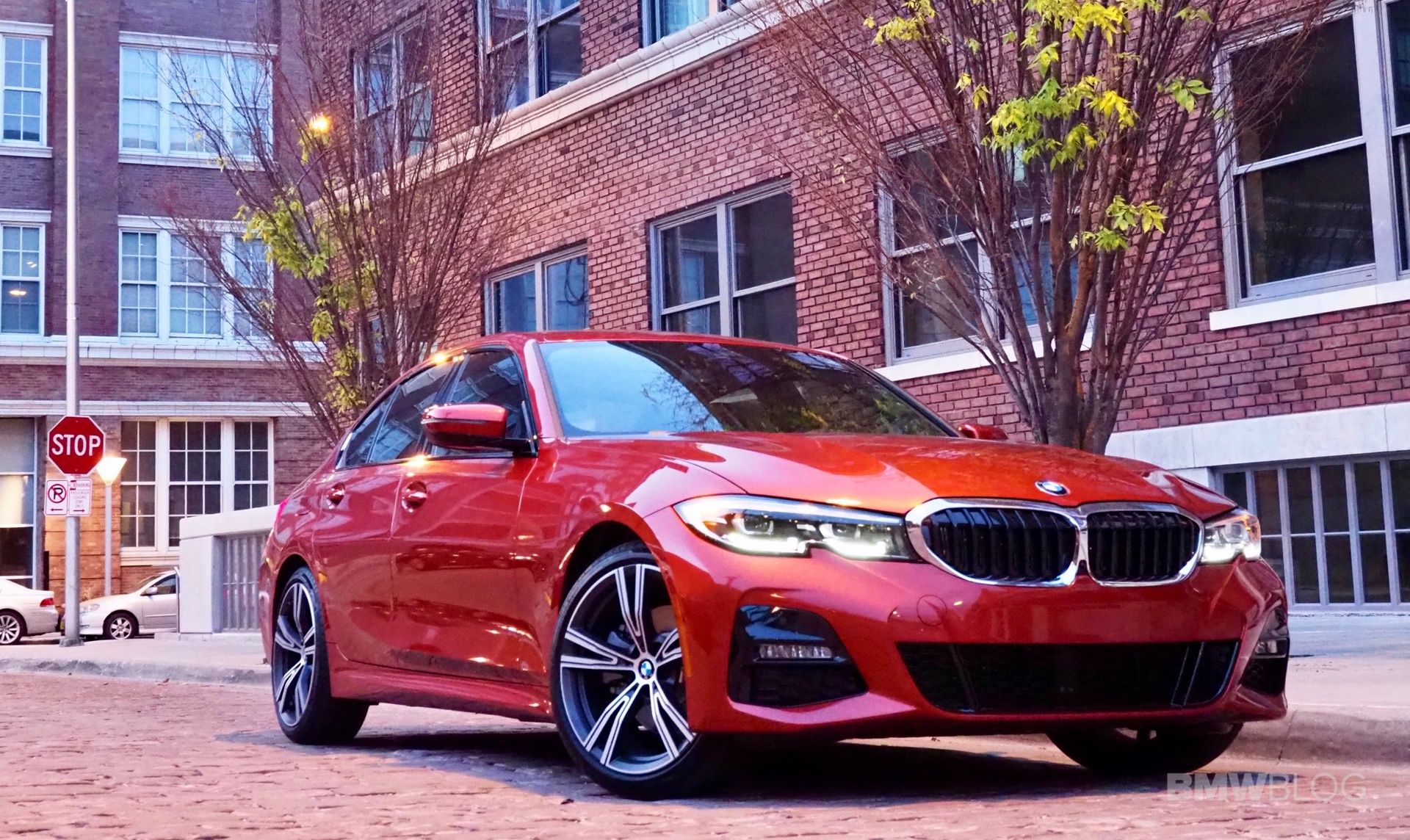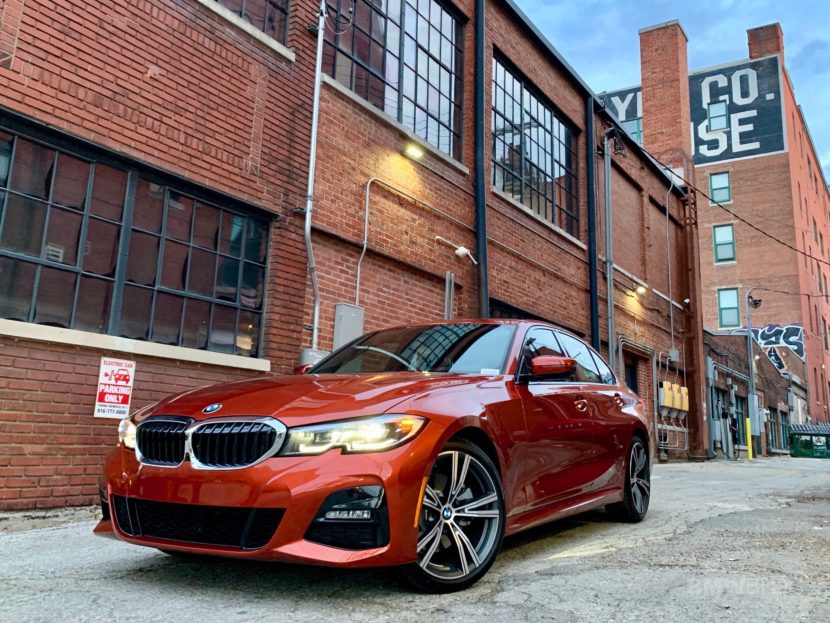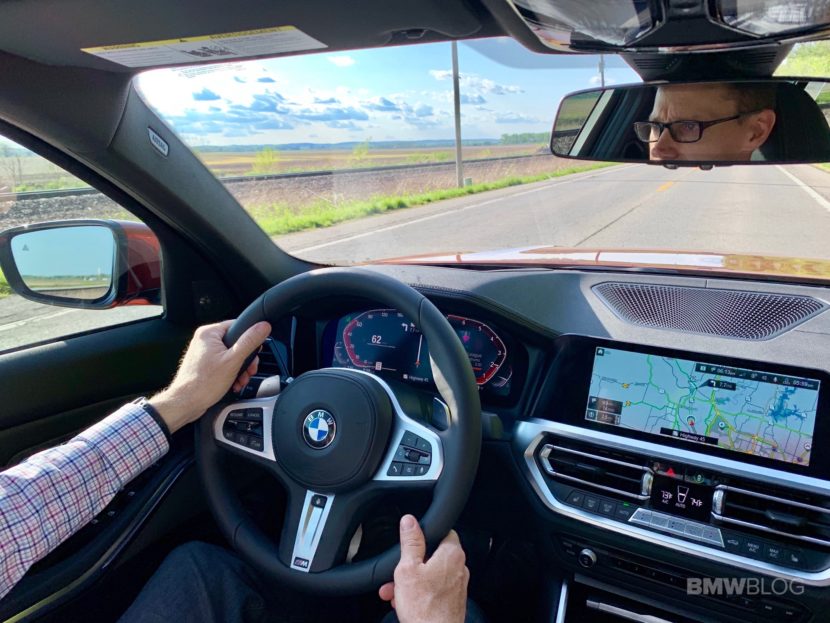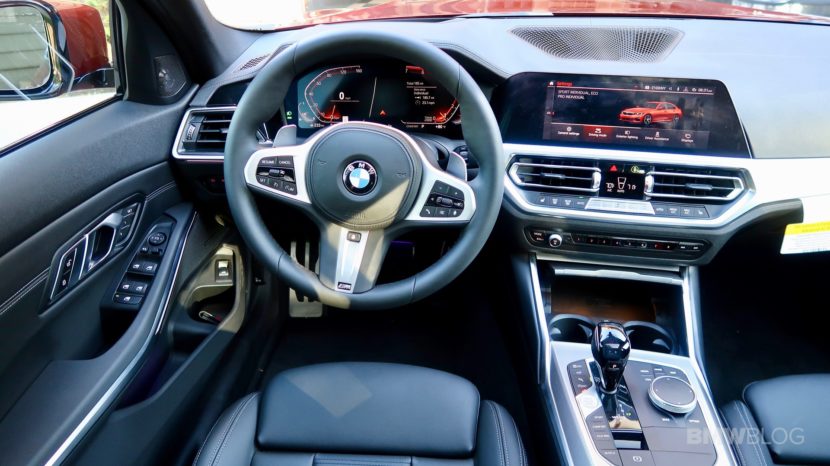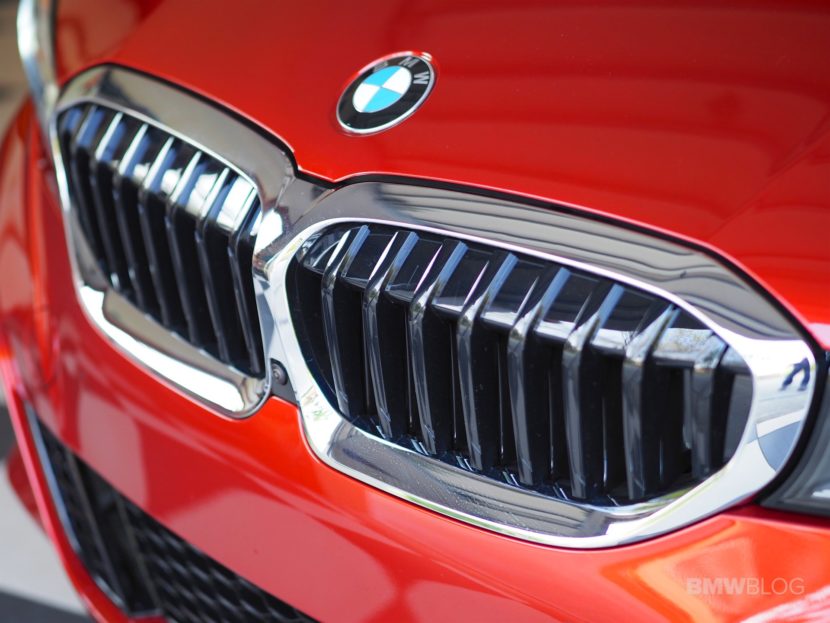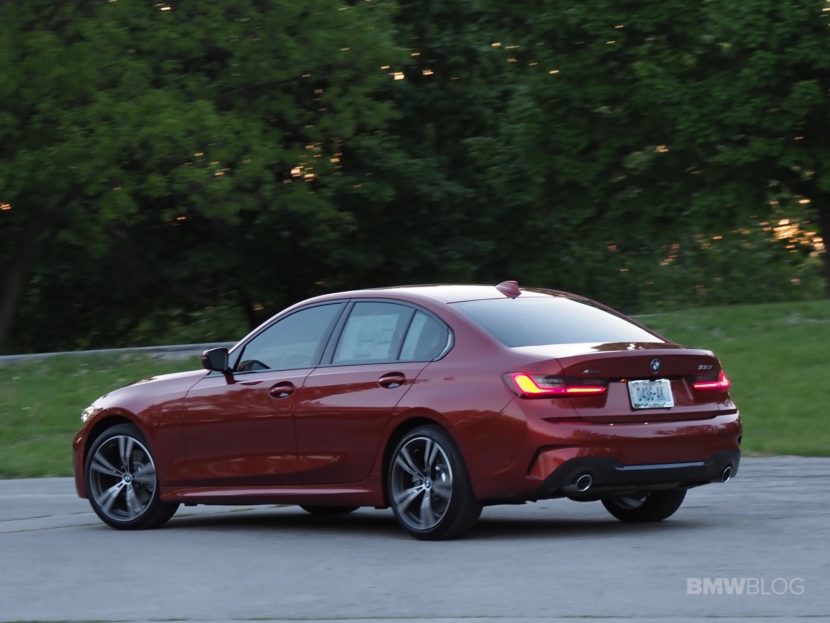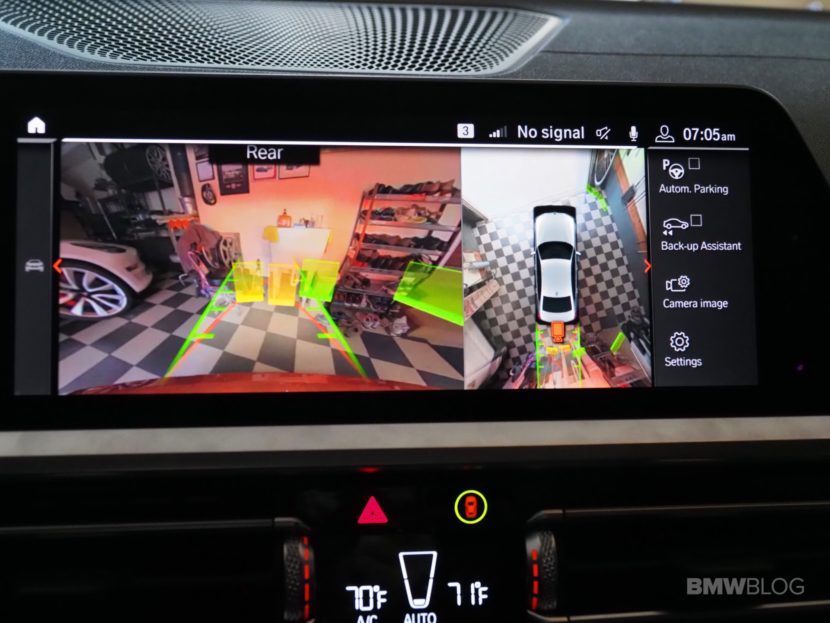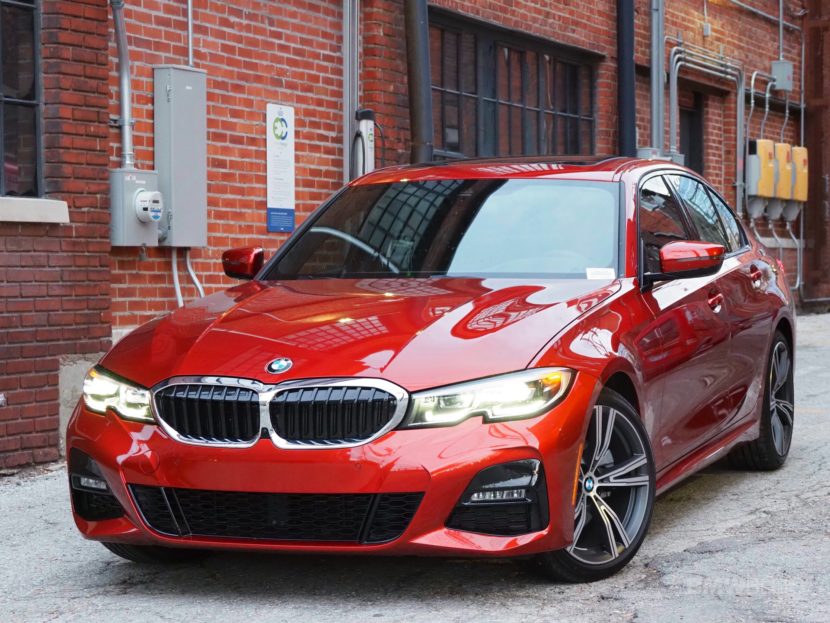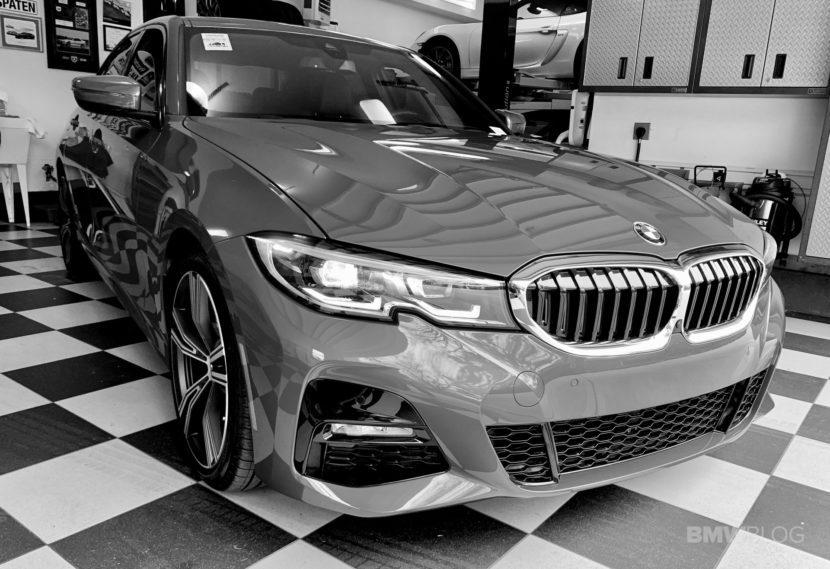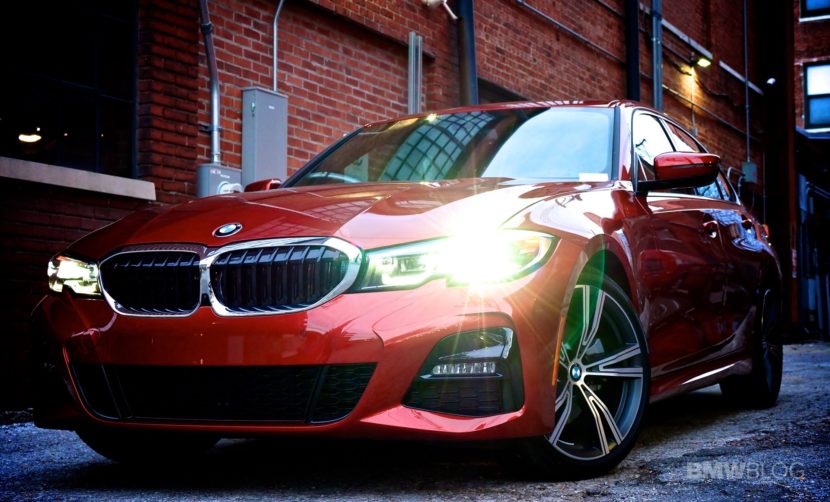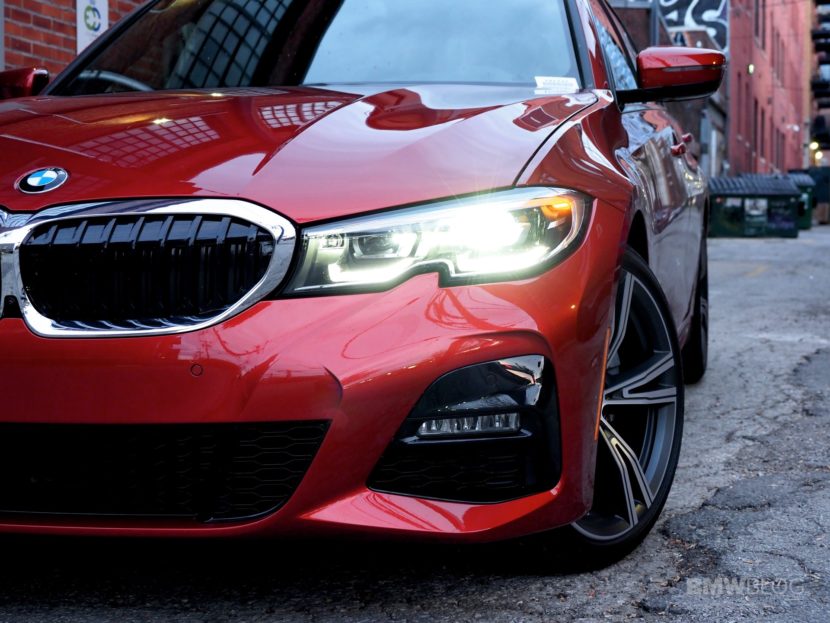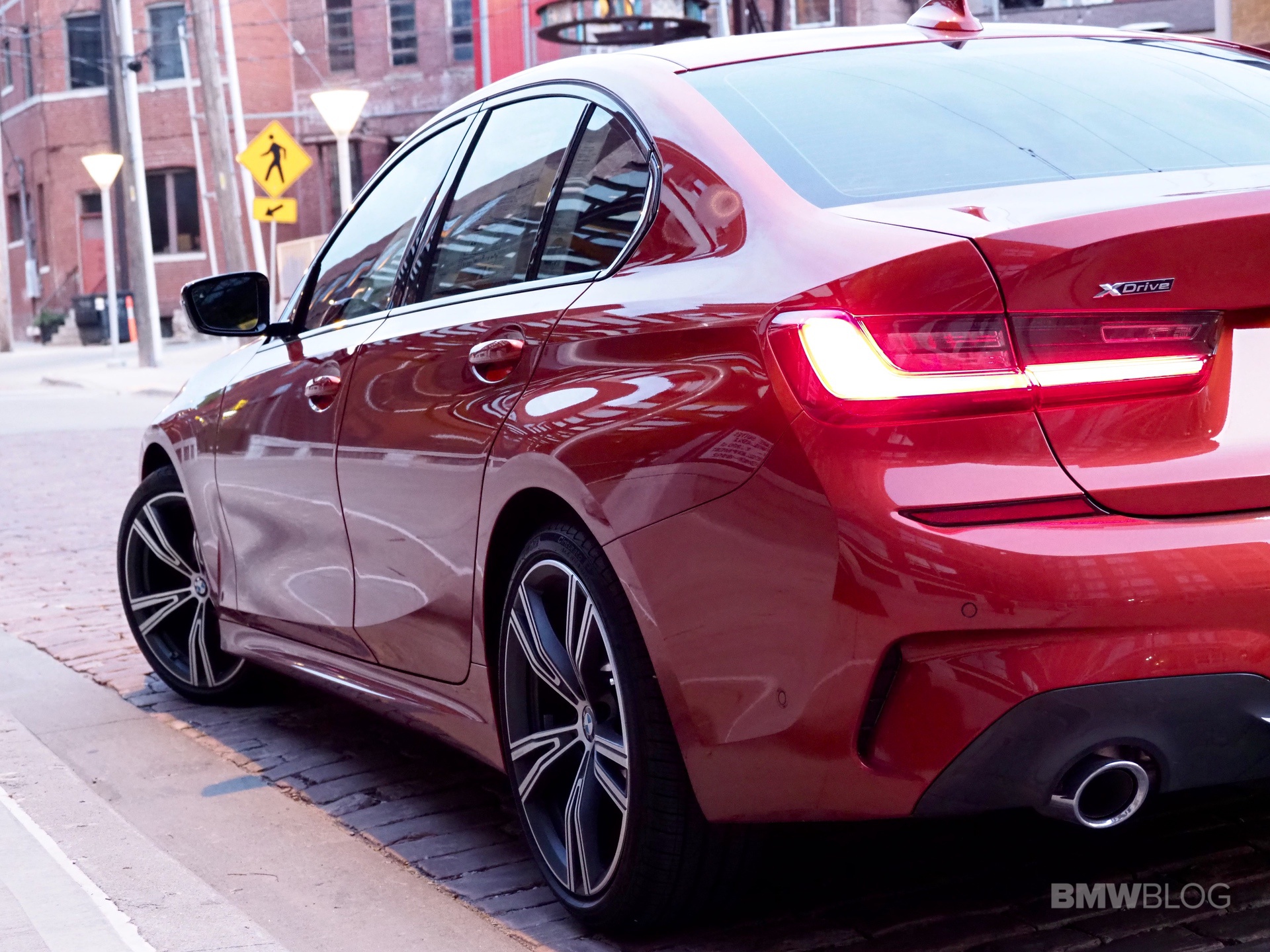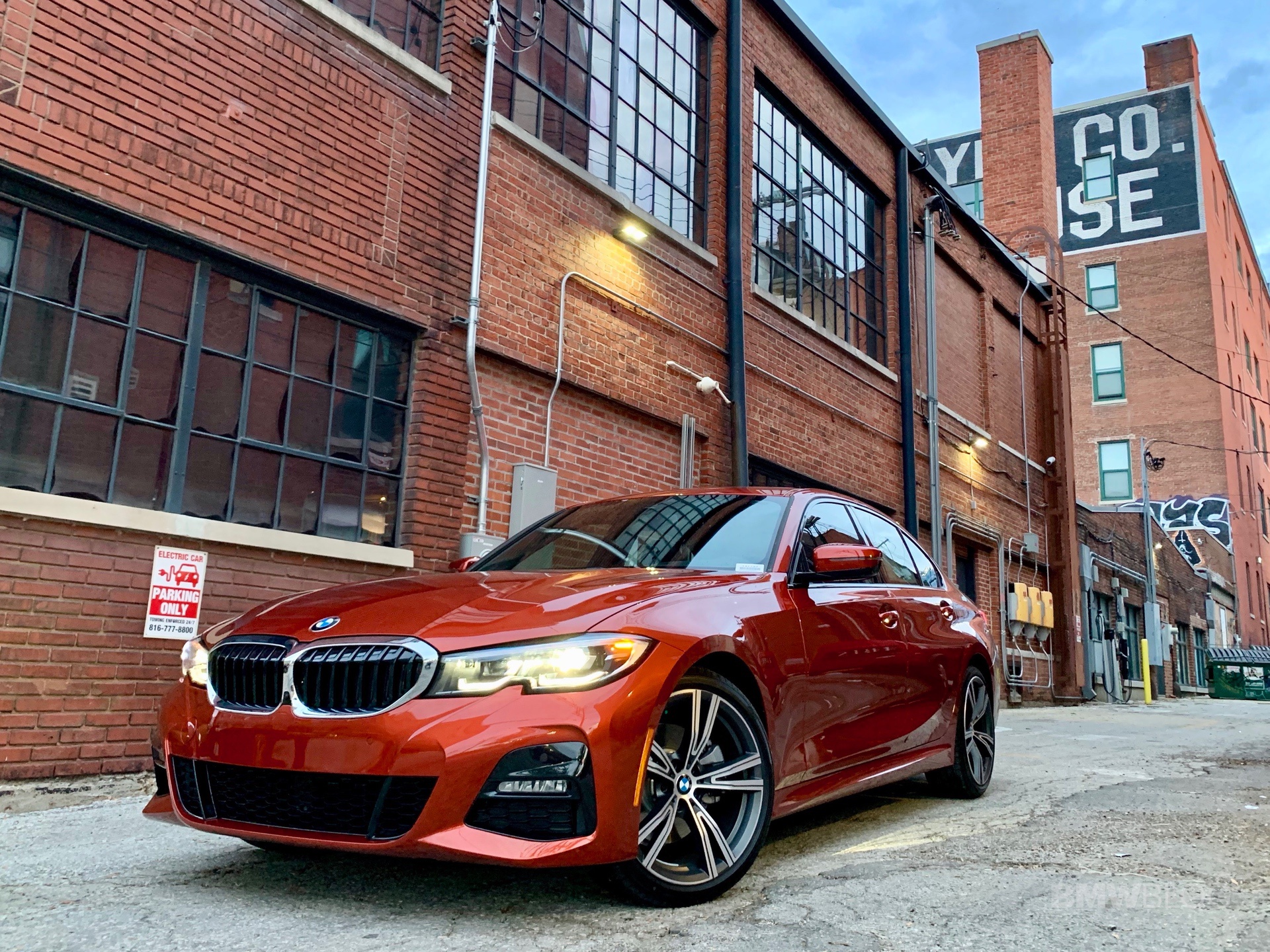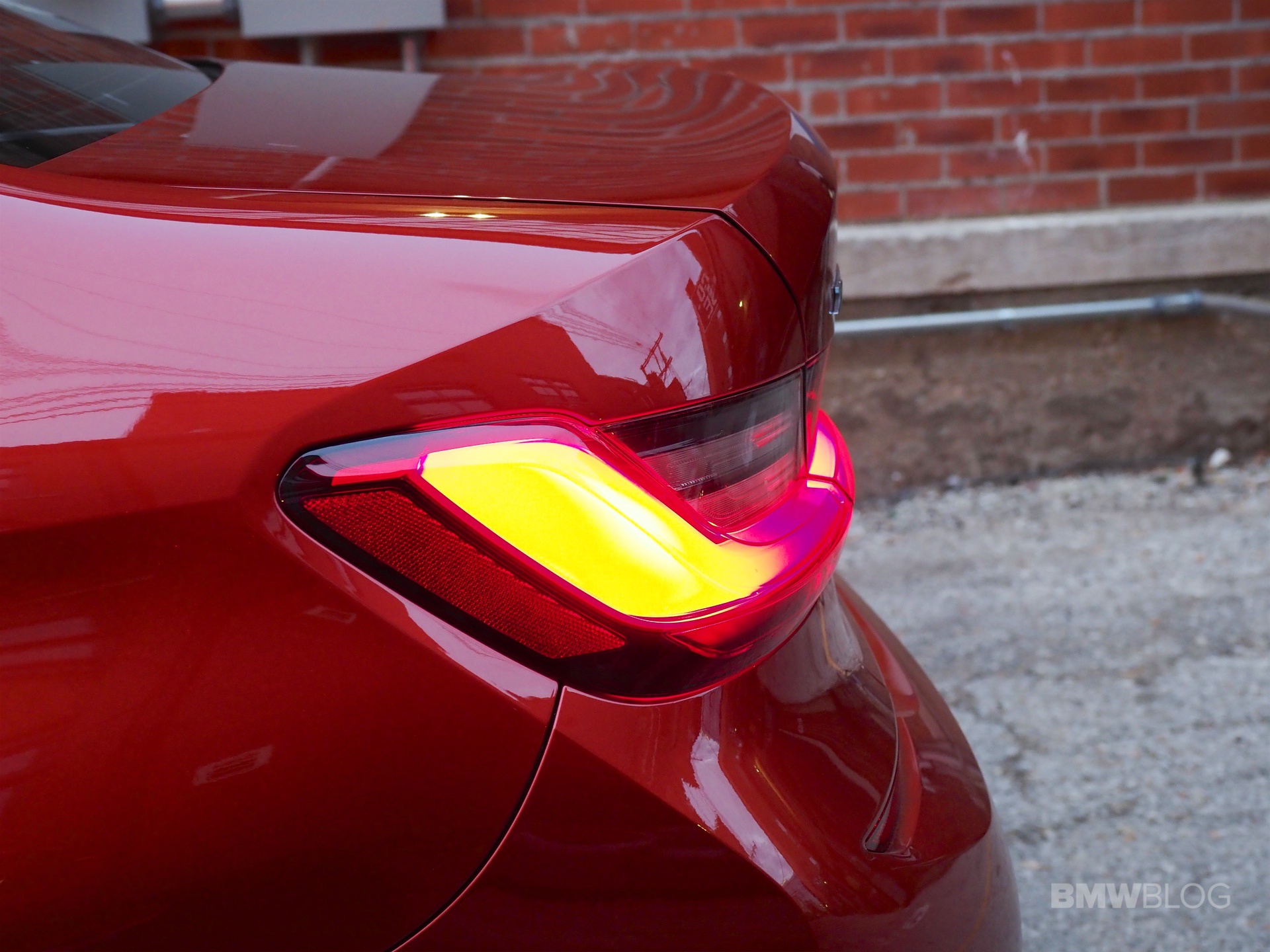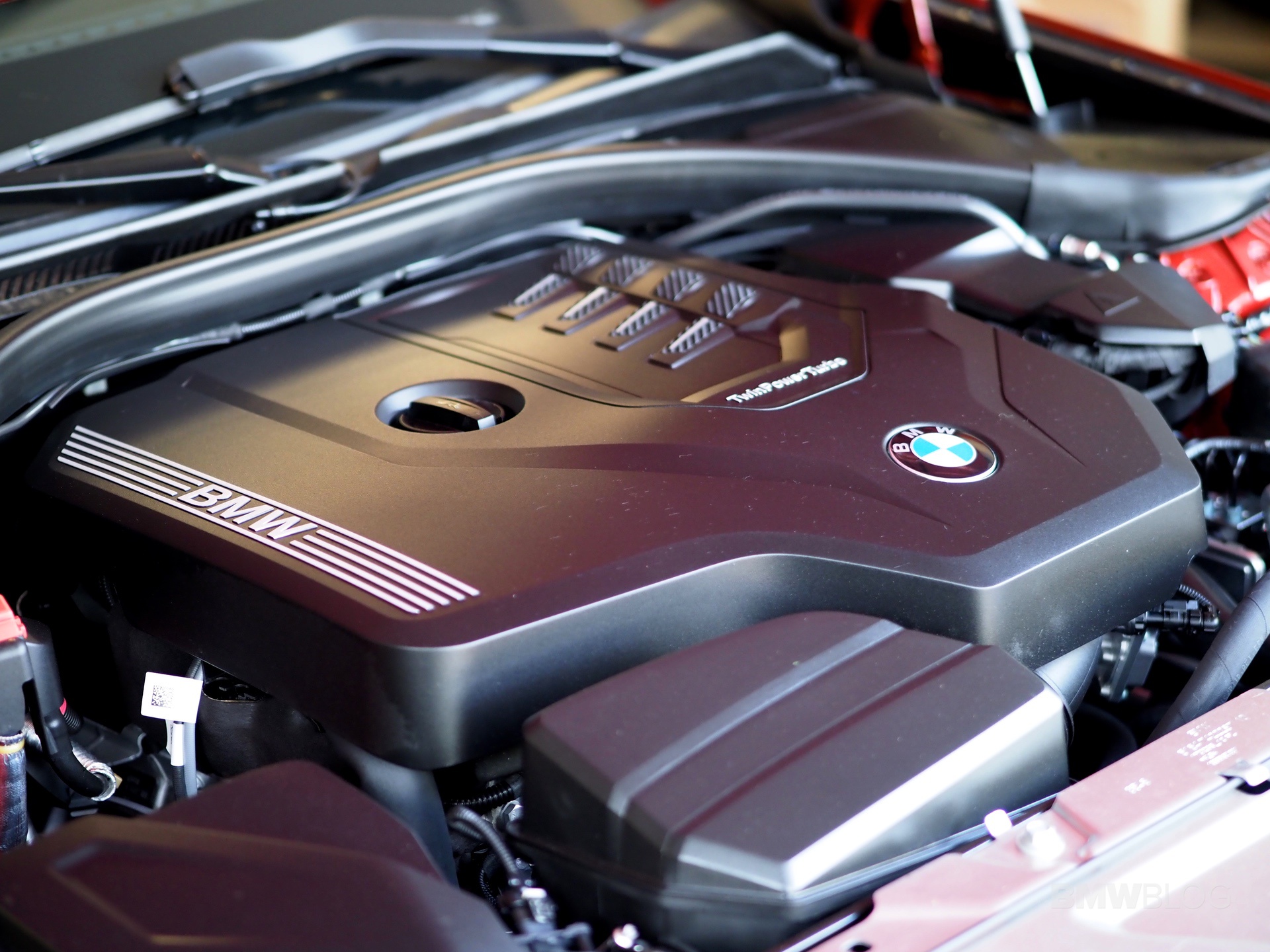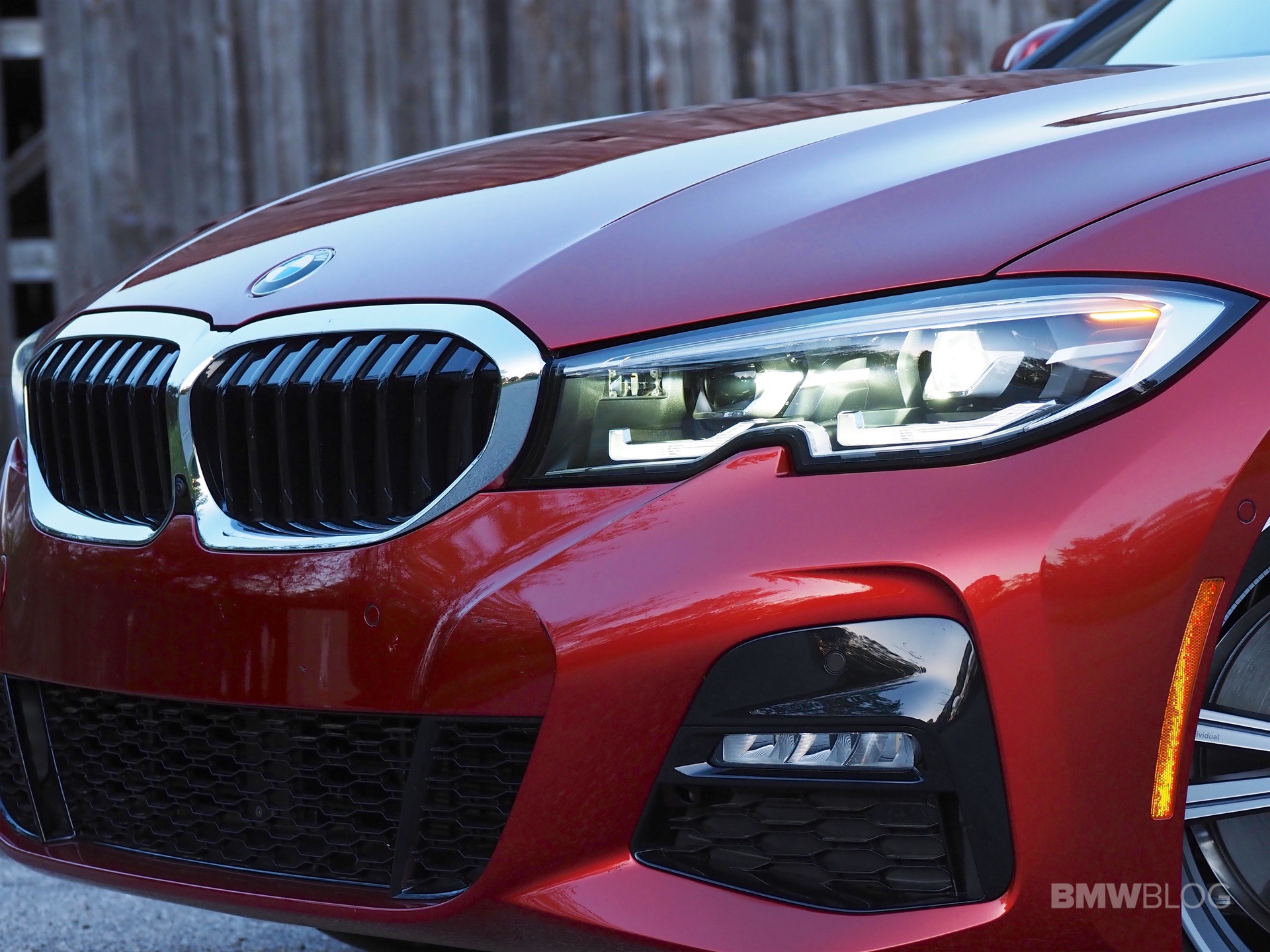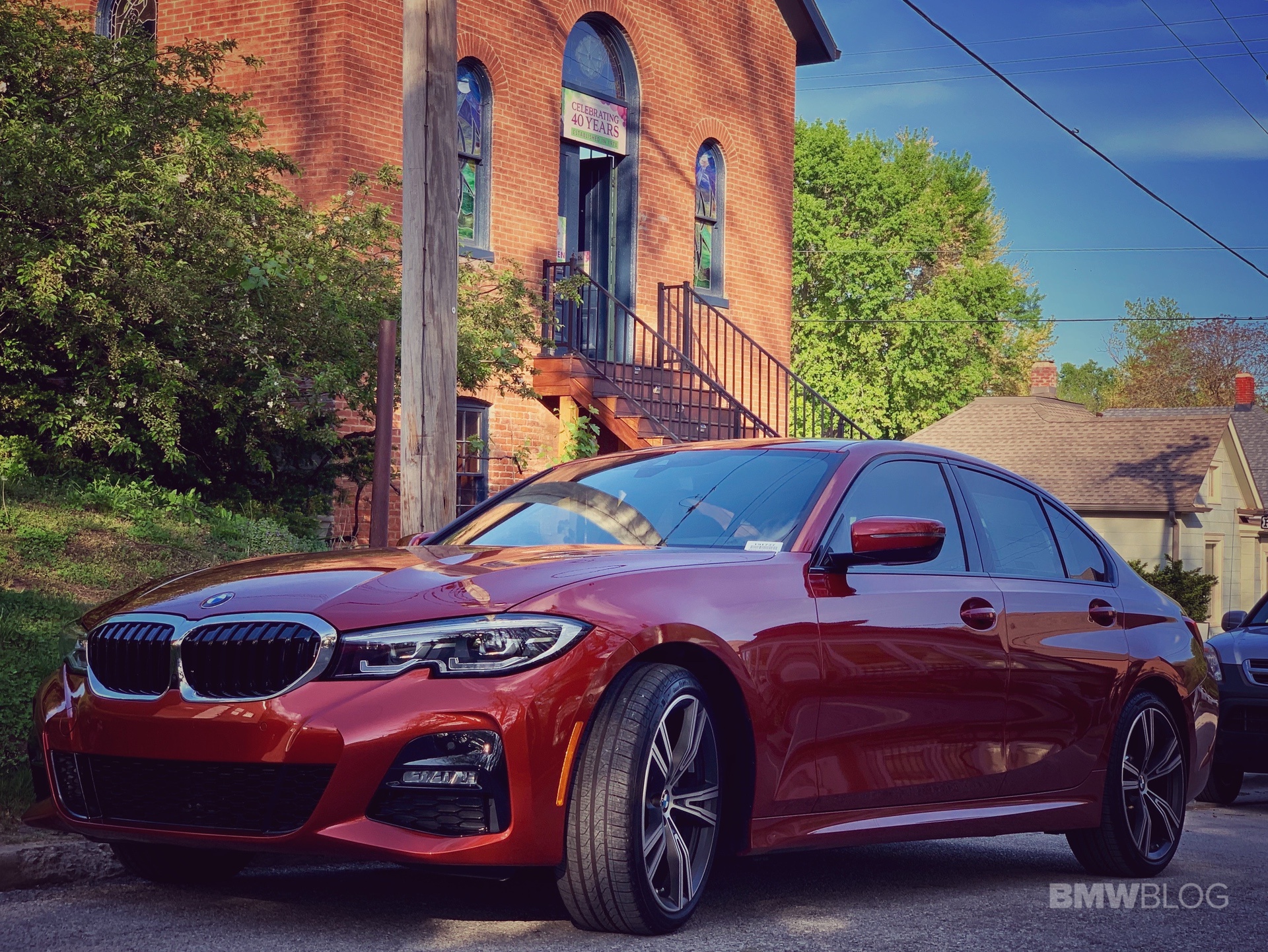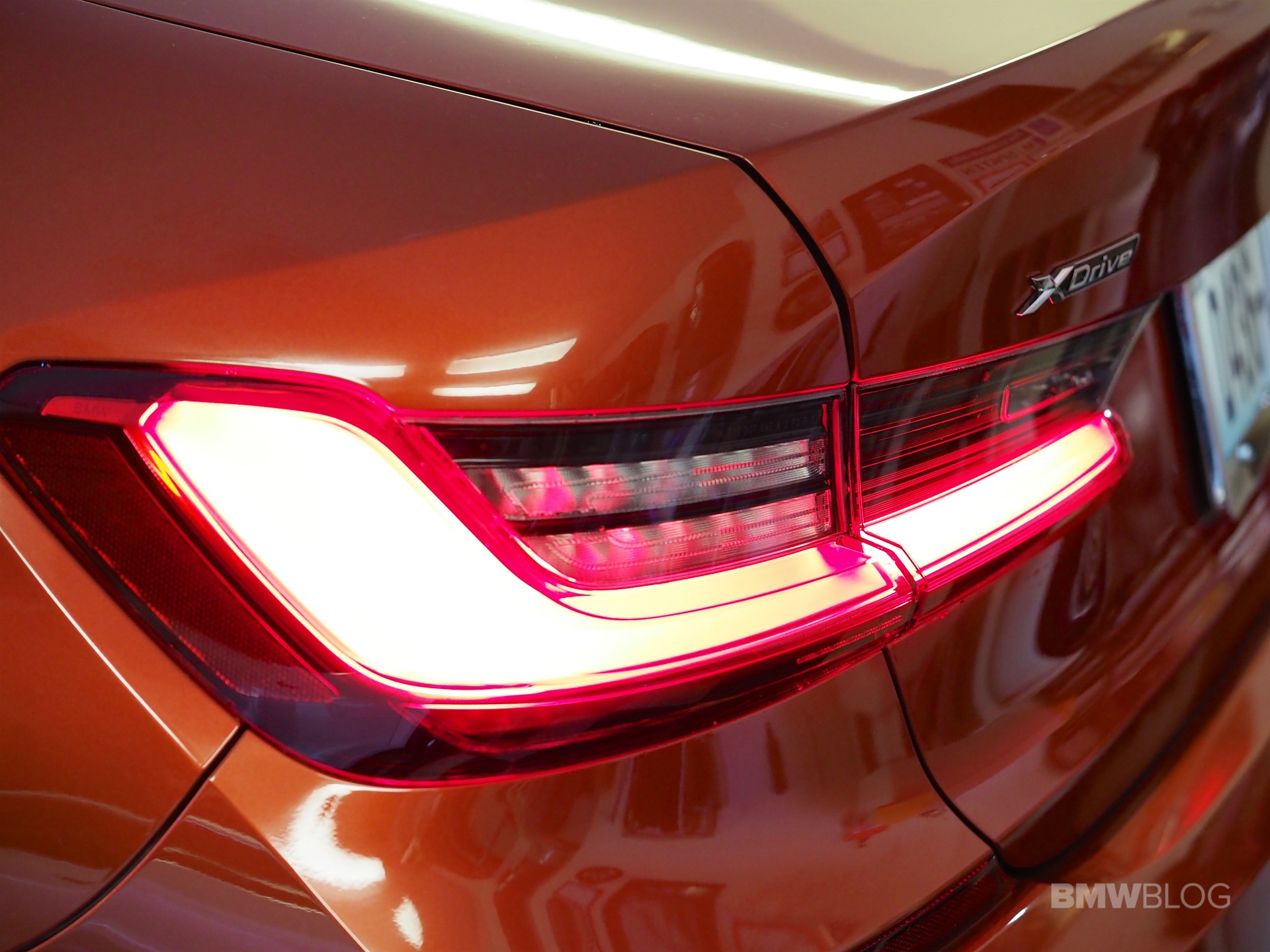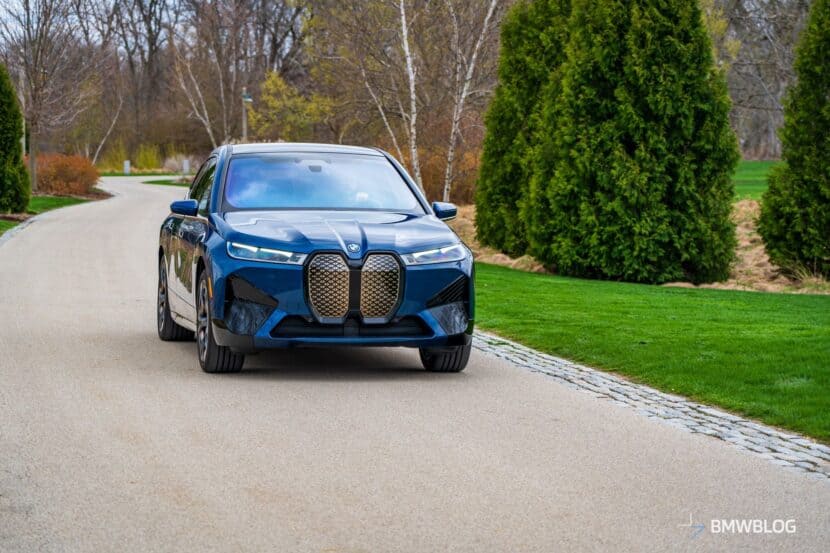The all-new 2019 BMW 3 Series marks BMW’s 7th Generation in a long line of successful sports sedans for the German car maker. For years the 3 Series has been seen as the benchmark sports sedan and as such, one of BMW’s most important cars. The last generation 3 though seemed more luxury than sport, however. The new G20 3 Series though represents a return to form for BMW who have delivered an engaging drivers car once again.
Recently we tested a 330i M Sport, courtesy BMW of Kansas City South, in stunning Sunset Orange Metallic that was nicely equipped with $13,000 worth of options. The Sunset Orange would appear as different colors depending on the light, from a burnt orange in low light to a sparkling orange in the bright sun. I even had some people think it was brown in the garage at work.
The $5,000 M Sport Package is no mere cosmetic package, rather it includes a host of performance enhancements to the car that are both mechanical as well as aesthetic. Specifically, the M Sport Package includes M Sport Suspension which is entirely different with firmer dampening, stiffer anti-roll bars, springs, bearings and even greater camber. The car is also lowered by 0.4 inch in both the all-wheel drive and rear wheel drive models, whereas prior generation only the rear wheel drive sports packages were lowered.
With a purported 50 percent stiffer chassis, a wider front, and rear track, the new G20 330i handles great. Turn in is quick and it corners remarkably flat with the newly devised suspension. Though the suspension is definitely firm, it is not harsh. Whether cruising out on the open interstate or bombing along the rolling hills of a back country road, I found the new 330i M Sport remained composed.
For the driver, there is a beefy M Steering Wheel with padel shifters mated to variable sport steering whose ratio becomes even more direct in sport mode. Well-bolstered seats hold you in place during hard cornering and an anthracite headliner helps the cockpit shrink around you. This 330i had the optional heated steering wheel with a small button just below the horn. I mention this because in some makes, cough Porsche, if you want a heated steering wheel you cannot have the sport steering wheel.
Cosmetically there are M badges in the door sills, a more aggressive looking M Sport front fascia, blacked out grills, as well as rear diffuser. M Sport brakes not only stop better but weigh less with the use of an aluminum hat, though retain a steel brake surface.
The M Sport Differential isn’t just a program to brake the inner rear wheel in a corner as is seen in many other cars, rather the M Sport Differential uses an electronic motor to shift as much as 1,106 lb-ft of torque to the side needed. The M Sport Differential is optional on the 330i M Sport but standard on the M340i.
The engine in the 330i is the B48 turbocharged 2.0L 4-cylinder which produces 255 hp and an impressive 295 lb-ft of torque. This puts out 7 more horsepower and 37 lb-ft more of torque than last years 2.0L. The new G20 330i has gobs of torque starting way down low in the RPM range with peak torque being available at a mere 1550 rpm. Tip into the throttle and you notice a quick shove back into your seat.
0-60 comes in 5.3 seconds in the xDrive version or 5.6 seconds in the rear-wheel-drive version.
For the first time ever in a 3 series, BMW has chosen to only offer an 8-speed automatic as the only transmission. The manual is dead. The automatic shift knob is now similar to the ones you find in the BMW X5, X7 and 8 series, and the little stubby block feels great in the hand compared to what is found in a current 5 Series. Pull down to engage drive, shove forward to put in reverse, and with a satisfying snick to the left while in drive, you are in sport mode. Manual shift paddles are included on the M Sport Steering wheel. Fire them off under your fingers while blasting on an on-ramp and you are rewarded with a satisfying brrapp with each shift.
When it comes to tech, the new G20 3 Series elevates its game compared to the outgoing 3 with much larger 10.25” touchscreen central display for iDrive and a new 12.3” electronic instrument cluster. The speed and the tach are relegated to the sides of the instrument cluster display and as such the RPM gauge took a bit to get used to and is configurable.
BMW’s Head-up display is now 70 percent larger and remains best in the business with speed and navigation directions being displayed. Pop the car into sport and a RPM gauge also shows up. If you have an Android phone it can be the key to the car, but sadly this does not work with the current iPhones. A key card is also included, ala Tesla Model 3.
Taking a page from Amazon Alexa, you speak to the car and say “Hey, BMW! I am cold” and the car will turn the heated seats on. I also was able to get it to turn the heat up in the car without touching the HVAC controls. It even asked me what degree Fahrenheit I wanted. You can even pre-program the car to automatically turn on the heated seats to turn on if it is below a certain temperature.
I also found the input of destinations for the NAV now is much more accurate and fast compared to our 2018 BMW i3s.
Active safety now plays an even bigger part in the driving experience with the all-new 3. Side mirrors have active blind spot detection with little yellow caution triangles lighting up when a car is in your “Toten Winkel”, as the German’s call it. Lane keep assistance will warn you via buzzing in the steering wheel if you wander outside of a lane or it can actually steer you back into the center of the lane. The car uses input from Mobileye just above the rear view mirror to keep constant tabs on your driving and is labeled ConnectedDrive. This same camera will spot and display speed limit signs in the center of the instrument cluster as well. BMW does offer optional active cruise control.
BMW nomenclature now refers more or less to the amount of power a car makes. For example, my 2005 BMW 330i ZHP, the 30 part at the end meant 3.0L displacement. Now a 330i is actually a 2.0L displacement, yet it actually makes more horsepower than my old 05’ 330i. BMW uses a 500cc square cylinders times 4 to arrive at the 2.0L displacement. Variable valve timing, direct fuel injection and turbocharging are key technologies used in obtaining a stunning 127.5 hp/Litre output of the B48 2.0L motor.
BMW’s long-standing 3 driver modes are Sport, Comfort, and Eco-Pro. Sport mode sharpens up the steering ratio, aggressiveness of the throttle and the programming of the automatic transmission. I used Comfort when cruising, Sport when I wanted to drive more aggressively but did not really find Eco-Pro useful. At speeds 10mph and greater, the transmission can actually decouple the powertrain and coast to be able to increase fuel economy, though it will not do so in Sport mode.
I had a former BMW dealership mechanic look over the car with me and he pointed out some interesting weight savings BMW had done. The front hood and door skins are aluminum, and the front fenders are plastic. The brake rotors have aluminum hats but the brake discs and braking surfaces are steel. The shock towers are cast aluminum and the roof structure is still metal.
He also noted that the air conditioner is still belt driven and that in the summer heat he suspects the start/stop time of the car may be shortened to keep the A/C cool. We could see the power steering mechanism is clearly electric and close to the floor of the engine compartment. All these little weight saving tricks add up to an impressive 120 lb weight loss compared to the previous generation F30 BMW 3 series.
Negatives?
Not many but a firm tug on your shoulder from the seat belt approximately 15 seconds every time after you start off gets old fast. I could do without Lane Keep Assist warning and intervention. My first experience with this was with some road construction on a highway where cars were traveling over to the shoulder where the lane markings had not been moved. I steered to follow traffic and the lane keep intervention physically moved the car back. I fought it and brought the car back over but am sure the person behind me thought I was looking at a cellphone or drunk. Also, the lane keep assist does NOT like it when you try to apex an on-ramp. The lane keep assist warning and intervention are buried deep in the settings menu and I suggest turning them off if you enjoy a spirited drive. It has now become part of my pre-drive checklist with newer BMWs.
For a Sport Package, I thought the all-season run-flat tires were a bit narrow at 225/40/19 front/back and that their grip was easy to overcome. Wider wheels and more grippy tires are optional, however. And lastly, I still like the sound of BMW’s in-line six’s engine and exhaust more than the exhaust note of the 4 cylinder found in the 330i’s. The engine is truly remarkable in its power delivery, it just comes up short aurally for me. One final note, if you spec the spare tire, there is a significant decrease in the trunk room as the floor of the trunk is raised about 6 inches up into the cargo space.
BMW has returned to form with the all-new G20 3 Series. The 3 Series has always been the target for other car manufacturers and BMW has raised the bar again. The new 330i looks great, has a solid build quality, modern interior and cutting edge tech. And most importantly represents a return to being a solid drivers car and one worthy of becoming the new icon.
Special thanks to BMW of Kansas City South for access to the car for this test.


